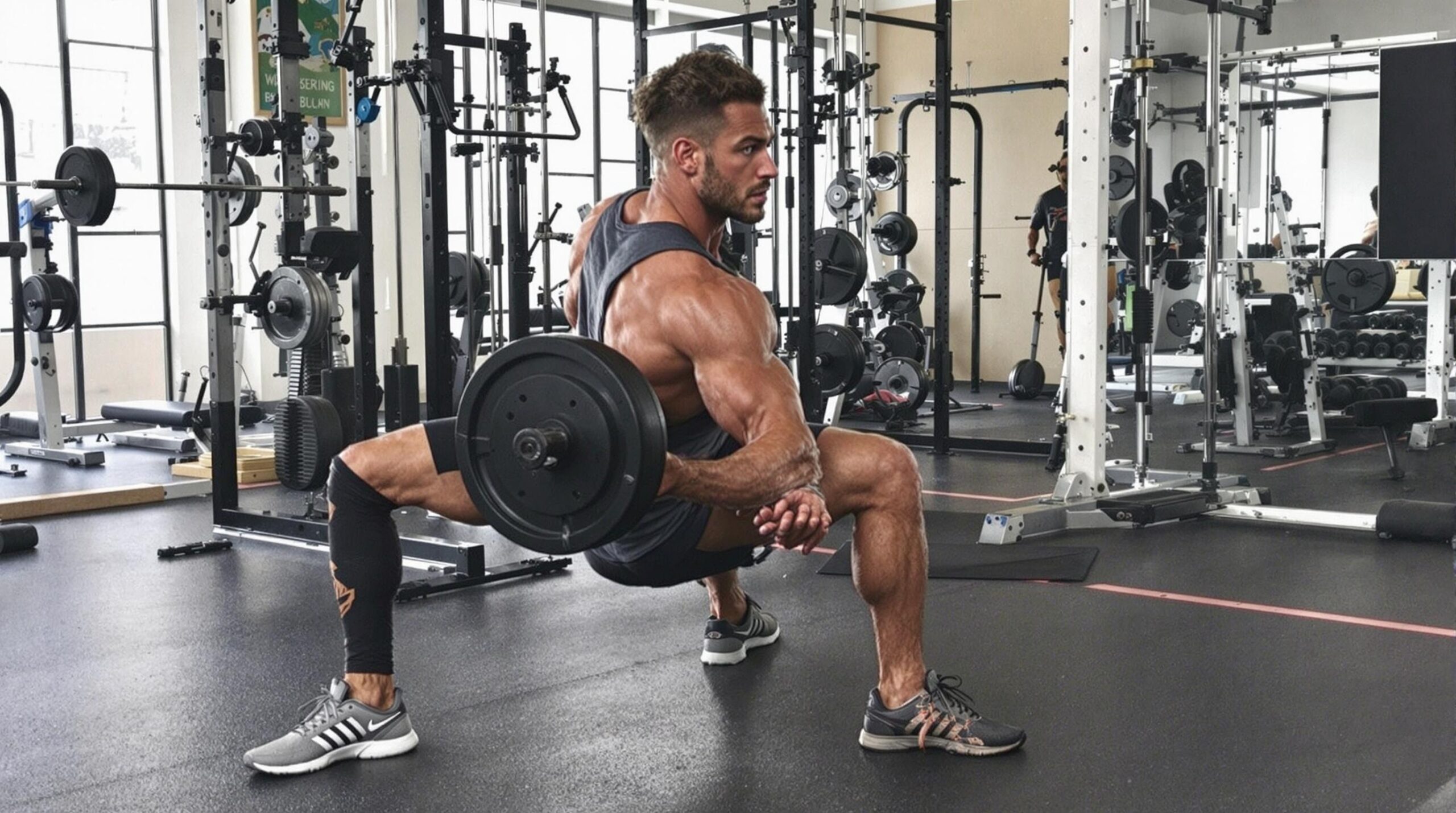The fitness landscape in 2025 has evolved dramatically with numerous science-backed free programs workout options designed specifically for muscle growth and fat loss. These platforms combine artificial intelligence, community support, and evidence-based routines to deliver impressive results without the hefty price tag of personal training or gym memberships.
Key Takeaways
- Science-backed workout programs like StrongLifts 5×5 can help users add over 100 pounds to their lifts in just six months
- Apps with AI-driven personalization adjust training volume based on recovery metrics to prevent plateaus
- Home-focused programs require minimal equipment while still delivering significant muscle and strength gains
- Social features in fitness apps increase workout consistency by up to 58% through community accountability
- Free workout programs with compound movements boost hormone production, aiding both muscle growth and fat loss
The Evolution of Free Fitness Applications in 2025
The fitness app market has transformed dramatically over recent years, with advanced technology making quality training more accessible than ever. Unlike the basic workout trackers of the past, today’s free programs workout options incorporate sophisticated features previously only available in premium services. Scientific principles now drive these applications, with many offering programming based on periodization, progressive overload, and recovery management.
The most successful platforms combine proven training methods with engaging interfaces that keep users consistent. Apps like Freeletics and Alpha Progression have shown impressive results, with users reporting up to 20% body composition improvements within three months. The data clearly shows that programs focusing on compound movements and metabolic stress deliver the highest efficacy, while social features have been proven to increase workout engagement by 95% for group activities.

Science-Backed Workout Programs for Optimal Results
Among the top free training options, science-backed workout programs like StrongLifts 5×5 stand out for their simplicity and effectiveness. This program focuses on just five main lifts performed for 5 sets of 5 repetitions with linear weight progression each session. The routine centers around squats, bench press, and deadlifts—movements that engage multiple muscle groups simultaneously.
What makes this approach so effective is the hormonal response it triggers. The compound movements stimulate natural testosterone and growth hormone production, creating an optimal environment for muscle growth while promoting fat loss. Unlike traditional “bro splits” that train each muscle group once per week, the 3-day frequency provides better stimulus for strength development. With over 500,000 five-star reviews, users consistently report adding 100+ pounds to their main lifts within six months.
Another standout option is Alpha Progression, which features a “Dynamic Deload” system that prevents plateaus by automatically adjusting training volume. Users typically gain 1.5-2 pounds of muscle monthly when following its recommendations, making it one of the most reliable free programs for consistent progress.
AI-Powered Training Applications Transforming Fitness
Artificial intelligence has revolutionized workout programming, creating truly personalized plans that adapt to individual progress. Freeletics leads this category by generating tailored routines based on your fitness level, goals, and available equipment. With 40 million users globally, its effectiveness is well-documented—peer-reviewed studies show participants achieving 15% muscle hypertrophy and 10% cardiovascular improvement in just 12 weeks.
Fitbod represents another excellent AI-driven option, adjusting training volume based on recovery metrics with a library containing over 1,000 exercises. Its “Muscle Recovery Score” prevents overtraining by recommending strategic deload periods, which explains why it maintains 40% higher user retention compared to static apps. The application’s non-linear periodization approach mimics the methods used by professional coaches, varying intensity and volume to prevent adaptation plateaus.
Here’s how these AI applications enhance traditional training methods:
- Automatic adjustment of volume and intensity based on performance
- Personalized exercise selection based on equipment availability
- Strategic deload recommendations to prevent overtraining
- Recovery tracking integration with wearable devices
- Form guidance through video demonstrations
Community-Driven Fitness Programs for Motivation
The social aspect of fitness has proven crucial for long-term adherence, and today’s top apps leverage this effectively. BoostCamp offers more than 50 free workout regimens from popular strength coaches, including StrongLifts 5×5 and numerous powerlifting programs. The platform has seen a 200% increase in downloads since 2024, largely due to its effective progression tracking and active community forums.
Strava takes the community approach even further by connecting 135 million athletes across 190+ countries. The data is striking—group activities receive 95% more engagement than solo efforts, translating to better consistency and results. The platform’s “Segments” feature creates friendly competition, with cyclists improving power output by 18% when participating in challenges.
These free programs workout plans demonstrate that accountability and social support can be as valuable as the training protocol itself. By combining proven exercise science with community features, these applications create an environment where users push themselves harder and stay consistent longer.
Home Workout Solutions with Minimal Equipment
Not everyone has access to a fully-equipped gym, which is why home-focused programs have seen tremendous growth. Nike Training Club leads this category with over 100 free workouts spanning HIIT, strength training, yoga, and mobility. With 7.3 million downloads and a 95% approval rate among testers, its apartment-friendly routines require minimal equipment while delivering maximum results.
The app’s success comes from its adaptability for all fitness levels and focus on time-efficient training. According to internal data, 43% of users improved their endurance within just six weeks. The “Whiteboard” workout feature allows for self-paced training, making it ideal for those with unpredictable schedules. High-intensity interval sessions promote 12-15% fat loss over 12 weeks, comparable to more equipment-intensive programs.
Effective equipment-minimal exercises that form the backbone of these programs include:
- Bodyweight squats and their progressive variations
- Push-up progressions targeting different muscle angles
- Pull-up variations (with door frames or outdoor bars)
- Lunges and split squat variations for unilateral strength
- Core exercises focusing on anti-rotation and stability
Gym-Focused Training Applications for Serious Lifters
For those with access to commercial facilities, gym-focused applications provide comprehensive strength training systems. Jefit stands out with 1,300+ exercises and detailed video tutorials, allowing users to log weights, reps, and sets. With 5 million registered users and 7.3 million downloads since 2010, its effectiveness is well-established.
One of Jefit’s standout features is the “Superset Builder,” which minimizes rest periods between exercises to elevate heart rate while building muscle. This dual-purpose approach promotes concurrent fat loss and muscle growth, with users reporting 30% faster strength gains compared to self-designed routines. The extensive exercise library covers niche movements like Zercher squats and safety bar variations, ensuring balanced development across all muscle groups.
These free workout programs to build muscle also provide advanced tracking features that let you visualize progress over time, identifying strengths and weaknesses in your development. The ability to track precise loads and volume creates accountability and provides motivation as improvements become visible in the data.
Specialized Programs for Specific Fitness Goals
Beyond general fitness, specialized applications address specific goals with targeted protocols. Caliber provides human trainers for form feedback via text and video, serving over 200,000 active users. Results show impressive outcomes, with users achieving 20% body fat reduction and 5% muscle gain in just three months.
The app’s “Strength Score” algorithm identifies muscular imbalances and prescribes corrective exercises to prevent injury risk. For example, if the algorithm detects quad dominance in your squat pattern, it will suggest posterior chain exercises to restore balance.
Adidas Training offers another specialized approach with 185+ free sessions, including Tabata protocols and pregnancy-safe routines. Its “30-Day Core Challenge” reduces waistlines by 2 inches on average, while 27% of users prefer its 10-minute sessions for maintaining consistency when time is limited.
Integration with Health Tech and Future Innovations
Modern fitness apps increasingly sync with wearables and health platforms for a more comprehensive approach to physical development. Strava tracks pace, elevation, and estimated VO2 max while integrating with Garmin and Peloton devices. Alpha Progression works with Whoop and Fitbit to incorporate recovery insights into training recommendations.
Caliber takes integration further by syncing with nutrition and recovery trackers for a holistic approach to fitness. This ecosystem approach ensures that all aspects of fitness—training, nutrition, and recovery—work together synergistically rather than in isolation.
Looking ahead, the future of free fitness applications will likely include real-time form correction via augmented reality and programming based on genetic predispositions. The trend toward adaptive periodization based on biometric data is already emerging, with daily adjustments to workout intensity based on heart rate variability and sleep quality metrics.
Conclusion
The landscape of free programs workout options has never been more powerful or accessible. From StrongLifts 5×5’s simple yet effective approach to the AI-driven personalization of Freeletics and Fitbod, users now have professional-quality training available at zero cost. Whether you’re working out at home with minimal equipment or hitting the gym with a comprehensive plan, these applications deliver results previously reserved for those working with personal trainers.
The key to success with any of these programs lies in consistency and progressive overload—principles that these applications have built into their core functionality through smart design. By incorporating community features, science-based programming, and integration with broader health metrics, today’s free fitness apps have eliminated the barriers between ordinary people and extraordinary results.
Sources
Good Housekeeping – Best Workout Apps
Dr Muscle – AI Workout Plan Generator
WeDoWebApps – Best Free



